To remove oil stains from a wall without damaging the paint, apply baking soda to the stain, let it sit, then gently wipe off. Using a damp cloth dabbed in mild dish soap can also be effective.
Dealing with oil stains on painted walls can be a bit tricky, as the wrong cleaning method could strip or damage the paint. Common household items, such as baking soda and mild dish soap, offer a safe and efficient solution.
When dealing with the pesky issue of oil stains on your walls, it’s essential to know how to remove them without causing any damage to the existing paint. How to Remove Oil Stains from Wall Without Removing Paint? The key lies in approaching the cleaning process with care and speed.
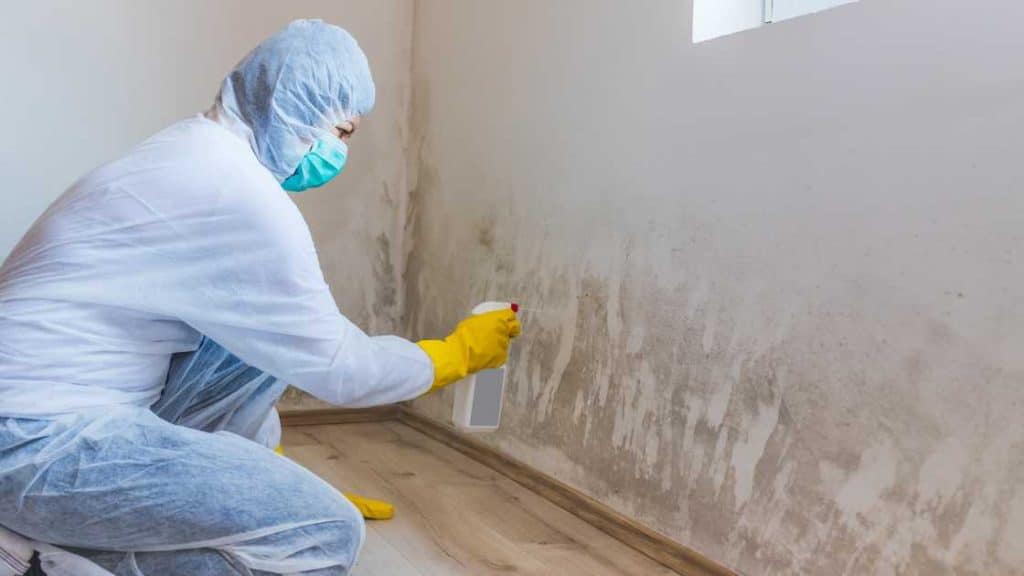
By doing so, you not only ensure the continued pristine appearance of your walls but also preserve the overall aesthetic of your living space.
This guide is here to equip you with simple yet effective tips, allowing you to effortlessly eliminate oil stains and maintain the vibrancy of your painted walls.
No need for costly repaints or professional services – just follow these straightforward steps for a spotless result.
Introduction To Wall Stains And Common Challenges
Tackling these blemishes without ruining the wall’s paint adds another layer of difficulty. With a careful approach, removing these stubborn marks is achievable while keeping your walls looking pristine.
Oil Stains On Painted Walls
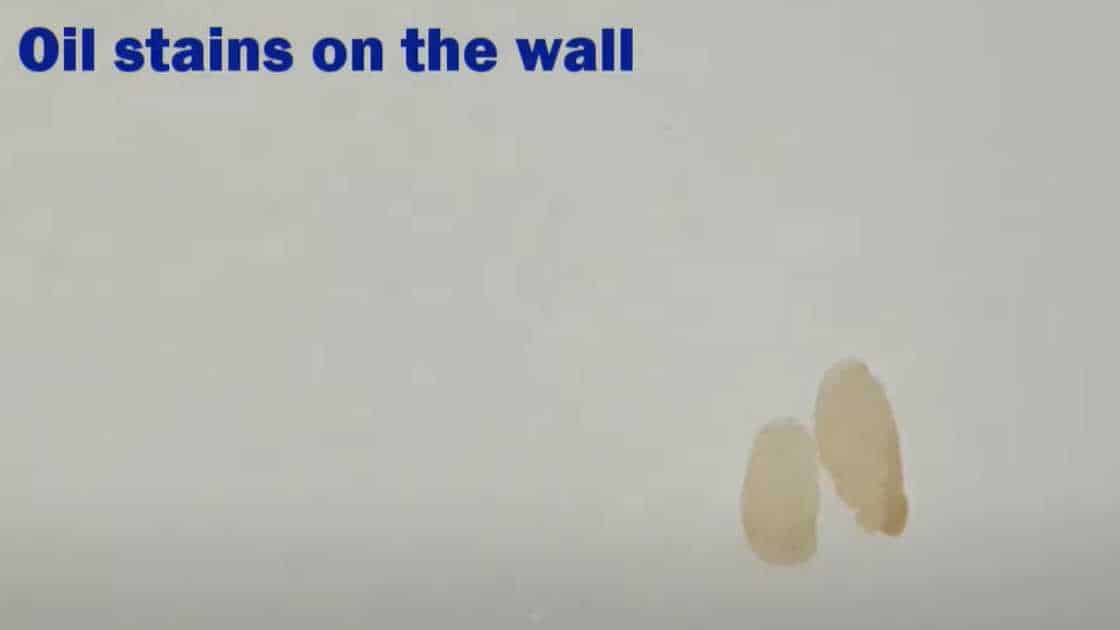
Oil stains arise from daily activities – cooking, playing, or simple accidents. These stains bond with wall paint, creating a cleaning challenge. Recognizing the oil’s composition helps in choosing the right cleaning method.
The Importance Of Gentle Cleaning Methods
Preserving the paint while cleansing requires gentle techniques. Harsh chemicals or abrasive tools can damage the paint. Soft sponges, mild detergents, and patience are the keys to success.
Pre-cleaning Preparations
Starting the cleanup process requires the right approach. It’s not just about scrubbing the wall; it’s about preserving the paint. Preparing correctly ensures effective stain removal. Follow these steps and get your walls spotless without damage.
Identifying Type Of Paint And Wall Texture
Distinguishing your wall’s paint and texture is vital. Glossy paints tolerate more cleaning than flat paints. Know your surface before you start.
- Water-based paint is typically less durable than oil-based options.
- Semi-gloss and glossy finishes can handle gentle scrubbing.
- Textured walls require delicate care to avoid damage.
Gathering Necessary Materials And Tools
Choosing the right cleaning tools and materials is essential. The goal: remove stains, not the paint.
| Materials | Tools |
|---|---|
| Baking soda | Soft cloth |
| Mild dish soap | Sponge |
| White vinegar | Bucket |
| Water | Gloves |
- Put on gloves to protect your hands.
- Mix cleaning solution according to stain severity.
- Keep water nearby to rinse the surface.
Dry Cleaning Methods For Oil Stains
Dry Cleaning Methods for Oil Stains offer a safe and effective approach. They ensure your colorful walls remain bright and unblemished. The right technique can lift away grease without a trace. Explore straightforward solutions to tackle those tricky spots.
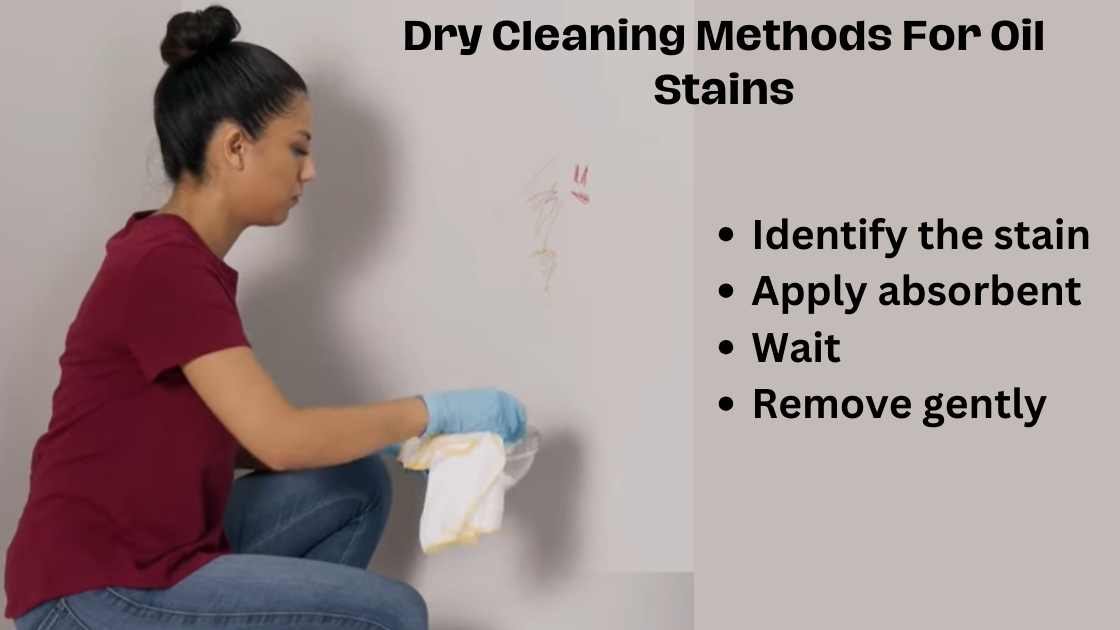
Using Absorbent Materials To Lift Stains
Start by tackling oil stains with super-absorbent materials. These act like a sponge to pull out oil. Follow these simple steps:
- Identify the stain: Look closely at the area.
- Apply absorbent: Cornstarch or baking soda works well.
- Wait: Give it time, preferably an hour.
- Remove gently: Use a soft brush or vacuum.
Brushing Techniques On Delicate Paint Finishes
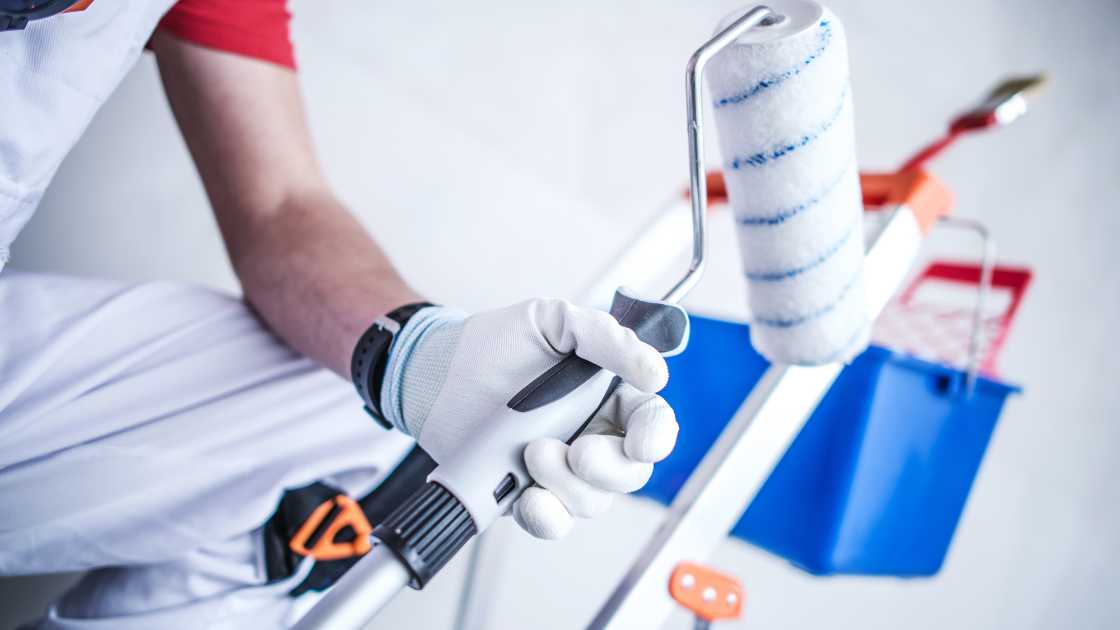
Delicate paint calls for careful handling. Use soft-bristled brushes. Light, gentle strokes work best. Here’s a quick guide:
- Choose your brush: Soft and non-abrasive.
- Dust the stain: Gently brush off any dry debris.
- Dab softly: Use a dry microfiber cloth if needed.
Remember: Always test your chosen method on a small, inconspicuous spot first to prevent further damage.
Wet Cleaning Approaches
Cleaning oil stains off walls can seem daunting. Yet, there’s no need to repaint. Wet cleaning methods are effective, preserving your paintwork. Learn how to use household items and store-bought cleaners. Tackle those stubborn stains without fuss.
Homemade Cleaning Solutions
Begin with simple items from the kitchen. They can work wonders on oil stains. Here’s a guide to creating a cleaning solution.
- Mix baking soda and water to make a paste.
- Apply the paste directly to the stain.
- Let it sit before wiping it away gently.
- Another option is to mix dish soap with warm water.
- Use a soft cloth to apply the soap solution, dabbing the stain.
Commercial Cleaners Suitable For Painted Walls
For tougher stains, turn to commercial cleaners. Pick products designed for painted surfaces. Here’s what to look for:
| Cleaner Type | How to Use |
|---|---|
| Pre-Mixed Degreaser | Spray on, let sit, wipe off |
| Paint-Friendly Multi-Surface | Apply with a cloth, rub gently |
| Enzymatic Cleaner | Dampen area, apply cleaner, wait |
Always spot test in an inconspicuous area. Follow the instructions for the best outcome. Some stains need more than one application. Patience is key. You can preserve your wall’s paint and remove unsightly oil stains with ease.
Targeted Cleaning: Step-by-step Process
Stains on walls can be tough. With the right steps, oil stains can disappear fast. Gentle methods protect your paint. Here’s how:
Application And Dwell Time For Cleaning Agents
Choosing the correct cleaner is vital. Many options work without harming the paint.
- Baking soda is a safe choice.
- Dish soap mixed with water helps too.
- For tougher stains, try cleaning vinegar.
Apply your chosen cleaner with care. Apply it right on the oil stain. Let the cleaner sit, but not for too long. Five to ten minutes usually works best.
Gentle Blotting And Dabbing Techniques
Next, blot, don’t rub, the stain away.
- Use a clean, white cloth.
- Press gently on the area.
- Repeat with a fresh section of cloth.
Patient blotting lifts the oil. Keep going until the stain is gone.
Avoid harsh scrubbing motions. They can damage the paint.
Preventing Damage To Paint During Cleaning
No one likes oil stains messing up wall aesthetics. Yet, cleaning can risk the paint you love. It’s crucial to approach this problem with a gentle touch. Prevent damage and keep your walls looking fresh with the right techniques.
Tips For Avoiding Paint Discoloration
Follow these pointers to keep colors true:
- Test first: Apply your cleaning solution to a small, hidden area.
- Soft materials: Use a soft sponge or cloth to avoid scratching.
- Mild cleaners: Opt for gentle, diluted detergents or baby shampoo.
- Pat, don’t rub: Dab gently instead of aggressively scrubbing.
- Rinse properly: Use clean water to remove any soap residue.
Maintaining The Integrity Of Wall Paint
Ensure walls stay pristine with these steps:
- Use the right tools: Feather dusters and microfiber cloths work best.
- Avoid harsh chemicals: Stick to pH-neutral solutions.
- Regular maintenance: Clean walls regularly to avoid buildup.
- Proper technique: Move in a gentle circular motion while cleaning.
- Immediate care: Address spills as soon as they happen.
Follow these guidelines, and keep walls vibrant and stain-free without losing that perfect finish!
Post-cleaning Care And Maintenance
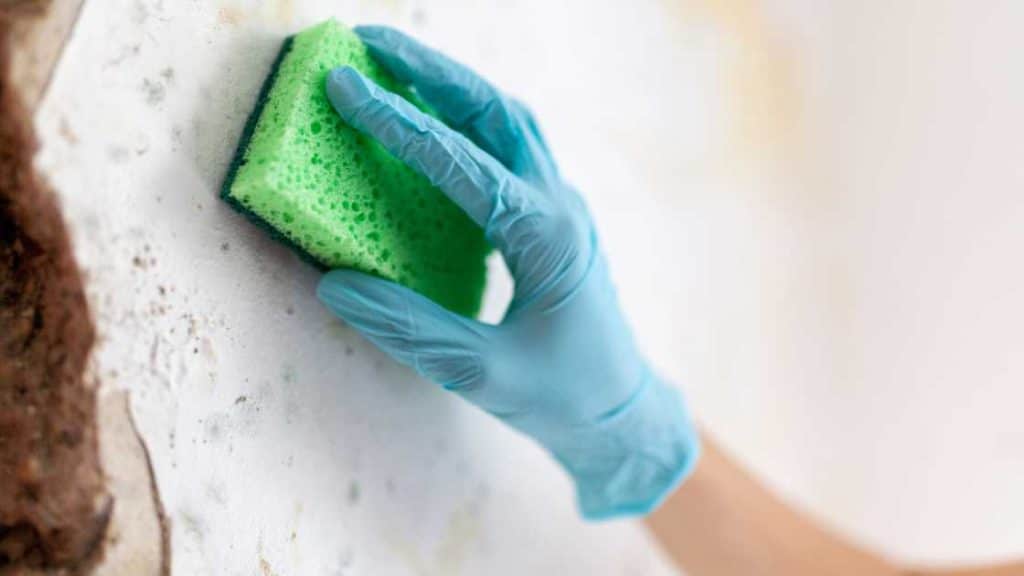
Removing oil stains from your wall doesn’t end with the last scrub. Proper care ensures your paint stays pristine. Follow these simple steps to maintain your walls.
Ensuring Proper Wall Drying
Freshly cleaned walls need time to dry. Take these steps to avoid paint damage:
- Keep the room ventilated: Open windows to increase airflow.
- Avoid direct heat: Don’t use hairdryers or heaters.
- Wait 24 hours before touching the wall.
Ongoing Care To Prevent Future Oil Stains
Stay proactive to prevent new stains. Implement these habits:
| Tip | Action |
|---|---|
| Clean spills quickly | Gently blot spills with a damp cloth. |
| Regular dusting | Use a microfiber cloth to capture dust. |
| Avoid moisture | Fix leaks and control humidity in your home. |
Touch-up paint might be needed for ignored stains.
Frequently Asked Questions Of How To Remove Oil Stains From Wall Without Removing Paint
How Do You Remove Oil Stains Without Removing Paint?
To remove oil stains without affecting the paint, apply a gentle degreaser or dish soap to the area. Use a soft cloth to blot the stain. Avoid scrubbing, which can damage the paint. Rinse with water and dry immediately.
How Do You Get Grease Off Walls Without Removing Paint?
To remove grease from walls without damaging paint, mix a solution of warm water and mild dish soap. Gently scrub the area with a soft sponge, then rinse with clean water. Pat dry with a soft cloth to safeguard the paint finish.
How Do You Remove Stains From Walls Without Damaging Paint?
To remove wall-stains without damaging paint, gently dab the area with a soft sponge dipped in mild soapy water. Rinse with a damp cloth, then dry with a towel. Avoid harsh chemicals and scrubbing to prevent paint damage.
How Do You Paint Over Oil Stains On Walls?
Clean the stained wall with soapy water and let it dry. Apply an oil-based primer to cover the stain. Once the primer dries, paint the wall with your chosen color. Use multiple coats if necessary for even coverage.
Conclusion
Tackling oil stains on walls can be daunting, but not impossible. With the right approach, you can successfully clean up without damaging your paint. Remember, quick action and gentle cleaning agents are your best bet for pristine walls. Happy cleaning, and may your walls stay spotless and vibrant!

